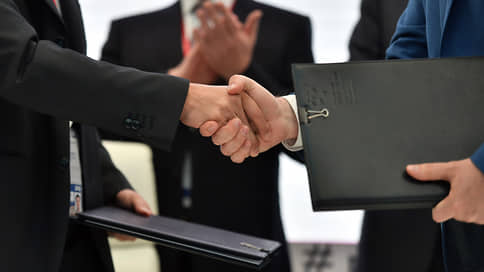At the end of the 3rd quarter of 2023, the volume of cross-border transactions in the M&A market dropped to a minimum
[ad_1]

At the end of the past quarter, the volume of the market for mergers and acquisitions in Russia dropped to an annual minimum of $8.75 billion. Transactions involving the exit of non-residents from Russian assets took place at a significant discount to the market price. In addition, the reporting period recorded the lowest result in terms of the volume of cross-border transactions. Experts expect that the M&A market is beginning to stimulate domestic demand for domestic products. However, tightening the monetary policy may reduce activity in the market.
At the end of the third quarter, the volume of the market for mergers and acquisitions in Russia amounted to $8.75 billion, according to data from the AK&M agency (Kommersant got acquainted with them). This turned out to be the minimum value over the past year. During the reporting period, 122 transactions were carried out.
First place in the ranking of industries for the reporting period was taken by trade ($1.81 billion). The largest transaction was the acquisition by Gazprombank of 14 Mega shopping centers for an estimated $1.425 billion (see Kommersant on September 14). After several quarters of leadership, the construction and development segment moved to second place ($1.03 billion). The most expensive transaction was the purchase by the Moscow government of a real estate property from MR Group for $206.6 million (see Kommersant, July 21). Metallurgy came in third place ($0.95 billion).
The reporting period also saw the lowest volume of cross-border transactions on record ($1.2 million). “Since mid-2022, the main driver for the growth of the Russian M&A market has been the unfavorable geopolitical situation and, in connection with this, the sale of Russian assets by Western investors (which are classified as domestic transactions.— “Kommersant”),” assesses Deputy General Director of AK&M Lyudmila Eremina. Thus, in the third quarter, 30 such transactions were recorded for $3.79 billion.
At the same time, as Maxim Tolkachev, a partner in the financial consulting department of DRT, suggests, “all the main transactions for the exit of foreigners, which should and could have been completed, have already actually taken place.” According to him, the monetary value of such transactions was significantly influenced by the requirement to sell assets at a discount of at least 50% of the cost. At the same time, as Ms. Eremina points out, some foreign investors will now simply not be able to sell their businesses in Russia due to the possible nationalization of their Russian subsidiaries.
The flow of transactions for the exit of foreign investors is indeed narrowing, but has not yet completely dried up, says Denis Surovtsev, director of the investment and capital markets department at Kept. “At the same time, the specifics of transactions are changing: management buyouts and buyback options are rare, since they are not approved by a government commission, and state requirements for discounts on value are becoming increasingly strict,” he emphasizes. Foreign investment in Russia remains rare; there is sporadic interest from Asia, notes Mr. Surovtsev. “The market is still waiting for the outcome of the fate of Raiffeisenbank; in some places there remain stakes below the control stake, which may be targets for acquisition,” says Igor Smirnov, senior director for corporate ratings at the Expert RA agency.
At the same time, there is an understanding in the country of the need to develop strategically important sectors of the economy, which is already stimulating new transactions with the participation of large Russian businesses representing the interests of the state, notes Ms. Eremina, for example, in mechanical engineering, in particular the energy, transport and logistics complexes. “In the coming quarters, we expect activity in M&A transactions in industries such as agriculture and IT. In agriculture, the trend of industry consolidation will continue. Within the IT area, there is a possibility of transactions to consolidate the telecom software market and combine the competencies of leading vendors,” says NKR Managing Director Dmitry Orekhov.
However, higher borrowing costs in the market will put pressure on the volume of mergers and acquisitions in the coming months. “With a key rate of 15%, the cost of capital requires a very high profitability of the combined business in order to “recoup” the capital,” notes Sergei Grishunin, managing director of the NRA rating service.
[ad_2]
Source link





